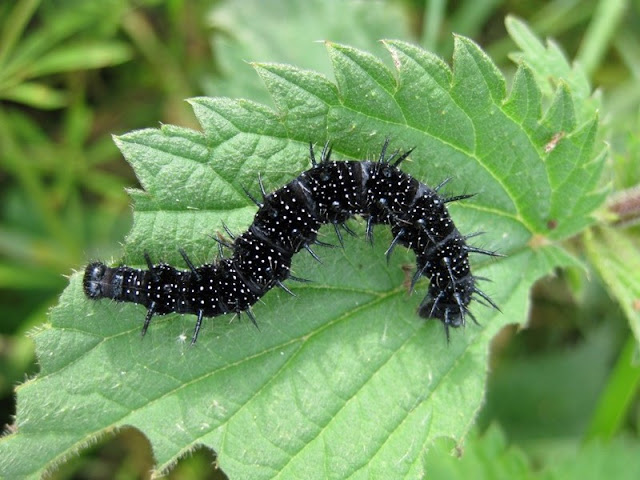2017 was generally not a
good year for butterflies here in South East Scotland, but strangely it
was a very good year for Red Admirals, Vanessa
atalanta.
In previous years the Red Admiral was considered to be a
summer visitor to Scotland. They would arrive here from May to July from the
continent and would lay eggs to produce the next generation, which it was thought either perished or returned south for
the winter. However, over the last few years there have been a number of early
sightings of Red Admirals here, suggesting that they are able to survive the
milder winters we have had recently. Sadly, the long cold winter we have just
had appears to have killed off all of the Red Admirals, but I notice that in
southern England enthusiasts have found eggs and caterpillars throughout the
winter.
The caterpillars nip the stems of nettles, causing the top
to wilt over and then they create a little tent for themselves by stitching the
edges of a leaf together.
Last year there were a lot of caterpillar tents seen and
I decided to collect a couple to watch the caterpillars' development. I picked two
nettles containing caterpillars on 22nd August and put them in a pot of water
with other nettles for the caterpillars to feed on. It turned out the
caterpillars were very close to forming into chrysalises.
Two days later, on 24th August, I noticed that one had
formed a chrysalis on roof of the container.
The other caterpillar had made its
way to the top of the container and woven silk to form netting on the plastic
window. The next day this caterpillar was hanging by its tail end from its silk pad.
The following day, the 26th August, the second caterpillar was
still hanging by its tail end. I took the cage outside and within 30 minutes
saw it was now forming a chrysalis.
It was a further 28 days before a butterfly emerged from the
first chrysalis on 20th September. The second chrysalis also took 28 days to
eclose, with the butterfly emerging two days later.















